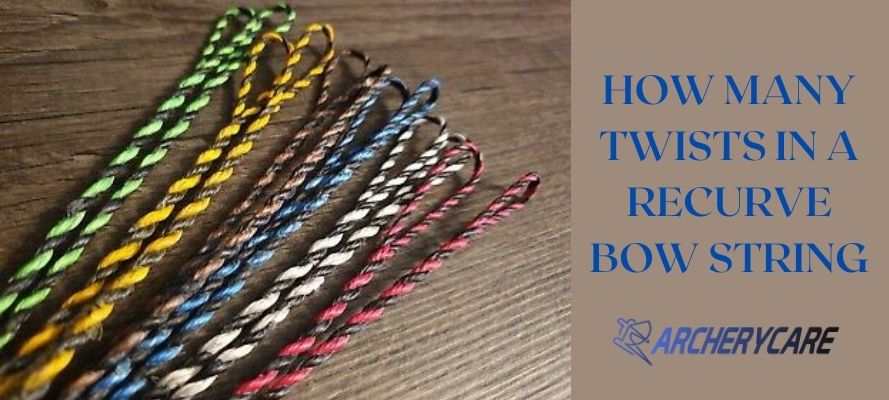The bowstring is like the wheels on an automobile since it distributes momentum from your bow to your arrow. Even the advanced or the latest bow is little more than a jumble of pieces without its string.
As a result, it's a crucial component of your archery gear that needs to be maintained and replaced to guarantee that it lasts for a long time.
Most importantly, your bowstring can influence several characteristics of shooting as well as bow efficiency. Calibration, grouping, sensitivity to noise as well as vibration are among the items on the list. You can simply twist your recurve bow to make use of all of these capabilities.
Now, the big question arises is, how many twists in a recurve bow string? To learn more about it, you've come to the correct place! Continue.
Table of Contents
How Many Twists Should A Recurve Bow String Have?
Now, before answering this question, it's important to realize that the answer differs. There is no universal number. According to their preferences and opinions, several articles and websites claim it in different ways. We've listed a few possibilities for you to consider.
Bowstring twisting is done to shorten it, and more twists are added to get the desired brace height.
Keep in mind to twist in a way that strengthens the core serving while re-twisting to reach proper bracing height.
In general, a string with 12 to 15 twists is considered good. BCY recommends starting with a twist rate of 0.5-0.75 per inch. Hoyt recommends doing a minimum of ten twists. In the event of a running loop string, a total twist of 40 or 50 twists is not even harmful.
A List That Continues
A recommended range for a normal compound bow is 1/2 to 3/4 twists per inch at first. It specifies that 30 to 45 bends should be applied to a 60-inch string. You won't need to twist anything else if you use non-creepy material recurve bow string.
Keep in mind that when we are talking of single cam strings, it may require any additional twists due to the length of the string.
The Reasons for Twisting A Bow String
There are three reasons why a bow string should be twisted. The first is to hold the threads together in a knot. The second one is to reduce the length of the string after creep has happened. The final one is to adjust the peep rotation. It’s been discovered that increasing the twist level minimizes peep rotation.
A string with too few twists is generally noisy and difficult to tune. In contrast, Too many twists may diminish the outcome in a string and that will be more susceptible to stretching when untangled.
Wrapping Up
Twists are used to change the height of the brace, and nailing it isn't quantum physics. Remember that adding twists reduces the length of the string while raising the height of the brace. Removing twists, on the other hand, entails stretching the string and lowering the height of the brace.
In general, you'll need to conduct tests and trials in order to achieve the desired brace height. A bow square or a basic tape measure can be used to determine this.
Read Next:

